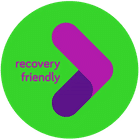Everyone, on some level, understands that exercise has positive effects. What needs to be clarified is how exercise can help curb addiction. We’ve all heard of the phrase “runner’s high”, the euphoria after a long period of cardio. Still, exercise’s effects on addiction are varied and impossible to be captured under a single umbrella term.
What’s essential is that broad and consistent evidence shows exercise fights addiction and relapse. This article will explain the science behind the truism, why exercise makes most people feel so good, and how it can help treat drug addiction.
Exercise as a Time Investment
This is the simplest way in which exercise fights drug addiction. When exercise can be made routine, the day is restructured to accommodate it—putting aside some time to get dressed and go to the gym, a 30-minute to 2-hour workout, a snack or dinner when you get back, and a shower. Drug use isn’t going on when engaged in planning or doing exercise. Exercise fights drug addiction because it is unique in having no overlap. No drug use will happen when you run or want to run that day due to its adverse effects on your performance.
Exercise as a Preventative Measure
Substance abuse doesn’t just appear out of thin air. Everyone has environmental stressors, things in our life that trigger negative emotions. Stress, depression, and anxiety can trigger bouts of addiction, which is why they are considered “comorbid” risk factors, meaning the two often appear together. A significant body of evidence shows that exercise fights addiction by reducing these negative states that contribute to drug addiction and relapse.
Chronic stress can trigger early “apoptosis”, or cell death, which leads to neural atrophy and central nervous system problems. These are heavily correlated with addiction. However, exercise fights addiction by normalizing the apoptosis-inducing effects of chronic stress, stopping damage to the central nervous system. The overall improvement of emotional state, leaving less time for negative emotions, is one of the best ways exercise fights addiction.
Exercise Fights Addiction by Replacing Dopamine
This is the famous runner’s high. When exercising or hiking up your laces about to go on a run, your brain sends neurotransmitters. These chemical messengers regulate many things in your body, including heartbeat, muscle movements, hormones, digestion, and senses. The primary neurotransmitters that we are concerned with are dopamine.
Known as the “happy hormone”, it makes us feel good about our actions. Dopamine unlocks the brain’s reward center, giving us that pleasant euphoria we crave. The evolutionary reason behind this reaction is simple; the body rewards us with feeling good when we do things that help survival, such as eating. The most commonly abused drugs, such as alcohol, cocaine, opiates, and amphetamines, flood the brain with dopamine, creating a feedback loop of relying on drugs for happiness.
Exercise similarly affects the brain without the drawbacks of chronic drug use, depleting the dopamine receptors and making it hard to be happy with anything else. Exercise fights addiction with homemade, appropriate dopamine release that curbs cravings. Recent research has also shown that exercise activates the endocannabinoid system, the same one that is activated when consuming cannabis. In a literal way, exercise is a natural, healthy high.
Exercise Fights Addiction by Regulating the Most Common Neurotransmitter
The brain relies on a neurotransmitter known as glutamate to do a lot. It is an excitatory neurotransmitter, which means it stimulates nerve cells. It is also the most common amino acid, which forms together to create protein. In short, your brain relies on glutamate to learn and store memory, send messages, grant you energy, feel pain, to regulate sleep. Glutamate does a lot!
Repeated drug use decreases your base levels of glutamate. Instead, it makes your brain release more glutamate only when taking drugs. Exercise fights addiction by normalizing this process, blocking the increase of glutamate that drug-taking produces. This matters due to relapse and drug-seeking behavior. In a well-regulated and well-exercised body, drugs will struggle to hijack the brain’s centers and suppress/flood glutamate.
Frequent exercise is an effective tool in reducing dependency, as it actively stops drugs from having their full neurochemical effects. Glutamate is not the only thing exercise helps regulate. Repeat exercise changes the way your body binds opioids, quite literally making you less sensitive to the drug. Exercise fights addiction by inducing actual and long-lasting chemical changes in the brain that actively resist the pull of addiction through-self administration.
Exercise Fights Addiction by Renewing Your Brain
We’ve all heard the claim that drugs kill brain cells. This statement is broadly true, as we have seen above, drugs interfere with neurotransmitters in clever ways to stop healthy brain function. But they go beyond simply causing damage and harm, a process known as neurogenesis, creating new neurons in the brain. Neurons are the most crucial component of the nervous system; they are electrically-activated cells that transmit information everywhere in the body and form connections.
The science in this area is still disputed, but drug use apparently stops adult neurogenesis. Fewer neurons are born, hurting our ability to learn new things, acquire new skills, and make neural connections that help us adapt physically and emotionally to life’s challenges. This process of brain maintenance is vital to a healthy mind, and good neurogenesis has been shown to ward off debilitating conditions like Alzheimer’s and Parkinson’s.
Exercise fights addiction by stimulating neurogenesis. Yes, swimming, running, cycling, jogging, and other aerobic exercises are so beneficial that engaging in them makes your brain produce better and younger cells. A reduction in neurogenesis is correlated with compulsive drug taking, as less active, unhealthy brains succumb to addiction more quickly. Exercise fights addiction by preventing drugs from killing brain cells and strengthens the brain’s natural defenses that resist repeat drug taking in the first place. This effect has cross-drug applications, warding off against the dangers of more than one addiction.
Exercise may not be a cure-all, but when combined with other forms of therapy, medication, and support systems, it produces neurochemical changes that, even though we are not entirely aware of, have a positive impact on avoiding and staying off drugs.
GateHouse Treatment
Here at GateHouse Treatment, we understand how difficult it can be to kick an addiction. This is why we are here to help with comprehensive, personalized treatment that suits your needs. We offer sober homes, therapy, outpatient programs, and a team of compassionate professionals who care about your growth and well-being.
Contact us through our website or call us at (855) 448-3588 to start your path to recovery. We can help 24 hours a day, seven days a week, to beat your addiction together.
- Cymbalta Withdrawal: Causes, Symptoms, And Management - October 12, 2023
- Boredom in Recovery: 5 Tips to Avoid Relapse - October 6, 2023
- Overconfidence and Rehab: Avoiding Relapse - October 4, 2023




